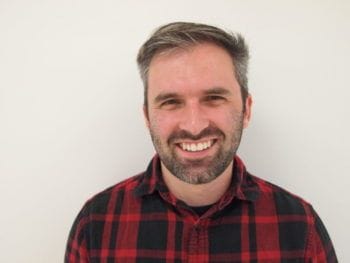Before attending the ACS Spring 2019 National Meeting & Exposition, I had only been to small regional library conferences. While I did not know exactly what to expect in Orlando, I felt certain that it would be different from any prior conference experience. While I mostly stuck to sessions hosted by CINF and CHED, I […]


Before attending the ACS Spring 2019 National Meeting & Exposition, I had only been to small regional library conferences. While I did not know exactly what to expect in Orlando, I felt certain that it would be different from any prior conference experience. While I mostly stuck to sessions hosted by CINF and CHED, I soon found that it was easy and rewarding to wander through the convention center, ducking into random symposiums. There was always something interesting going on. Even though my grasp of chemistry is weak and a large amount of what I listened to was over my head, it was always a new and stimulating experience.
First thing on Sunday morning, I went to a symposium hosted by CINF, focusing on librarians working with external partners to support chemical research and education. At this session, I met Michael Qui, who proved to be a generous and thoughtful host throughout the week. I also heard for the first time about ACS on Campus, which is something my campus would certainly benefit from. Learning about services like ACS on Campus and meeting people involved in supporting chemical research and education were largely my goals in attending ACS.
My Sunday evening included a poster session and networking event hosted by CINF. By attending sessions and events hosted by CINF, I had the opportunity to see people multiple times throughout the week, making for a more meaningful connection than merely meeting once. So while my first impression of ACS was that it was a huge, overwhelming, and unmanageable event, I quickly learned that within the technical divisions there are smaller, manageable, and, most importantly, welcoming communities.
On Monday, I attended a talk about using 3D printers to enhance chemical education. Researchers were using 3D printers in labs to print pieces of equipment to use in their undergraduate labs. Doing so often required undergraduate students working with a professor to design, print, and test the equipment. This, in itself, provided a wonderful opportunity for undergraduate research. Once a student successfully designed and printed a piece of lab equipment, it could be cheaply replicated, which allowed students taking introductory classes to all have parts of equipment for doing experiments, rather than having to gather around and watch one person perform the experiment because of limited and expensive resources.
I attended the Kavli Lecture Series on Monday evening. Professor Trisha L. Andrew spoke on her work with smart clothing. It was hard for me to follow the science behind what she was talking about, but, as an athlete, the potential of clothing to monitor certain biological functions is fascinating, exciting, and kind of frightening. What was perhaps the most exciting part of the whole week was hearing Professor Samuel Kounaves speak on searching for extraterrestrial life. I didn’t know what to expect at ACS, but I definitely did not expect to hear about alien life.
This is not an exhaustive list of every workshop or event I attended, that would quickly grow tedious. Suffice it to say that every day was filled with interesting sessions, friendly chats, good food, and frightened animals. CINF and the broader ACS community was kind, helpful, and always a joy to speak with. Despite my lack of foundational scientific knowledge, I felt at home and among friendly peers all week. A large part of the reason I wanted to attend ACS was to find support in my role as a chemistry librarian from those with more knowledge and experience in the field than me, and thankfully that is exactly what I found.